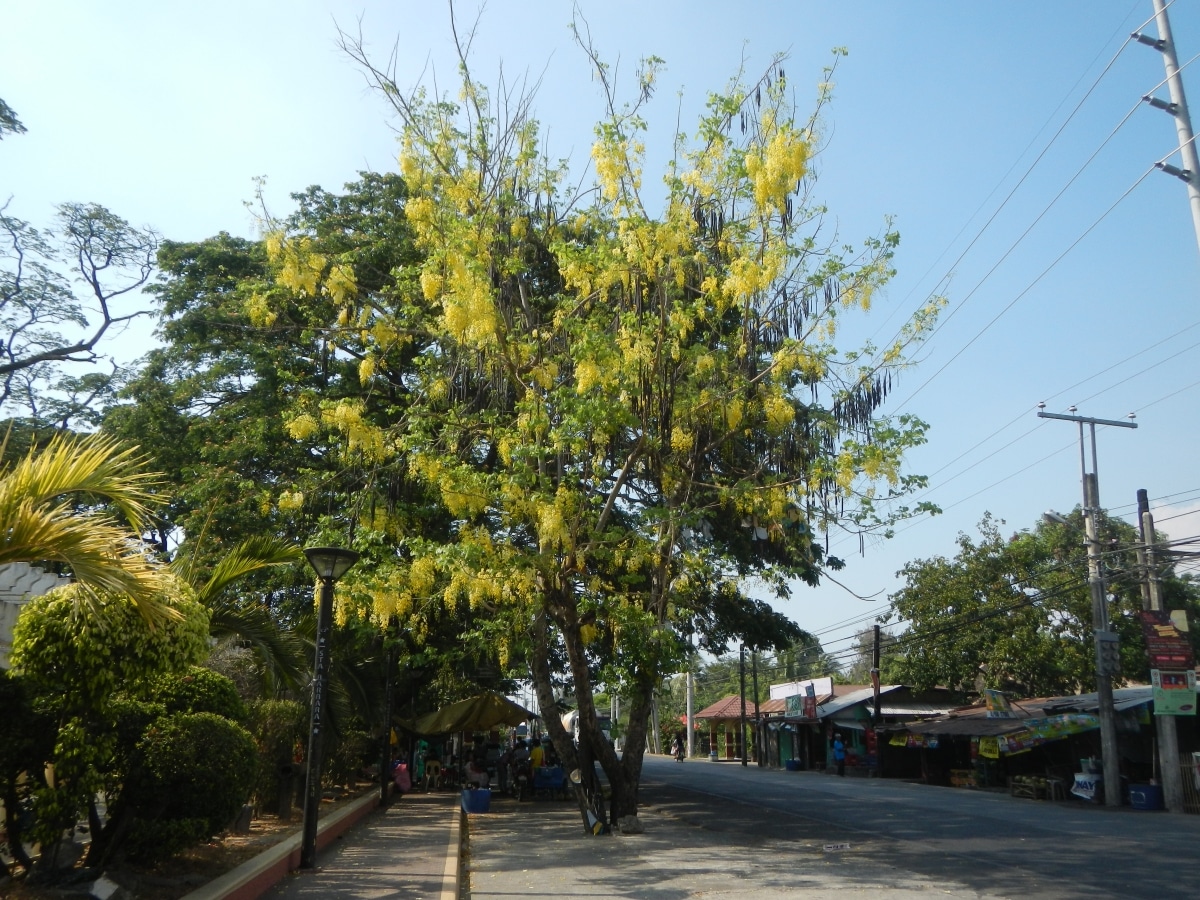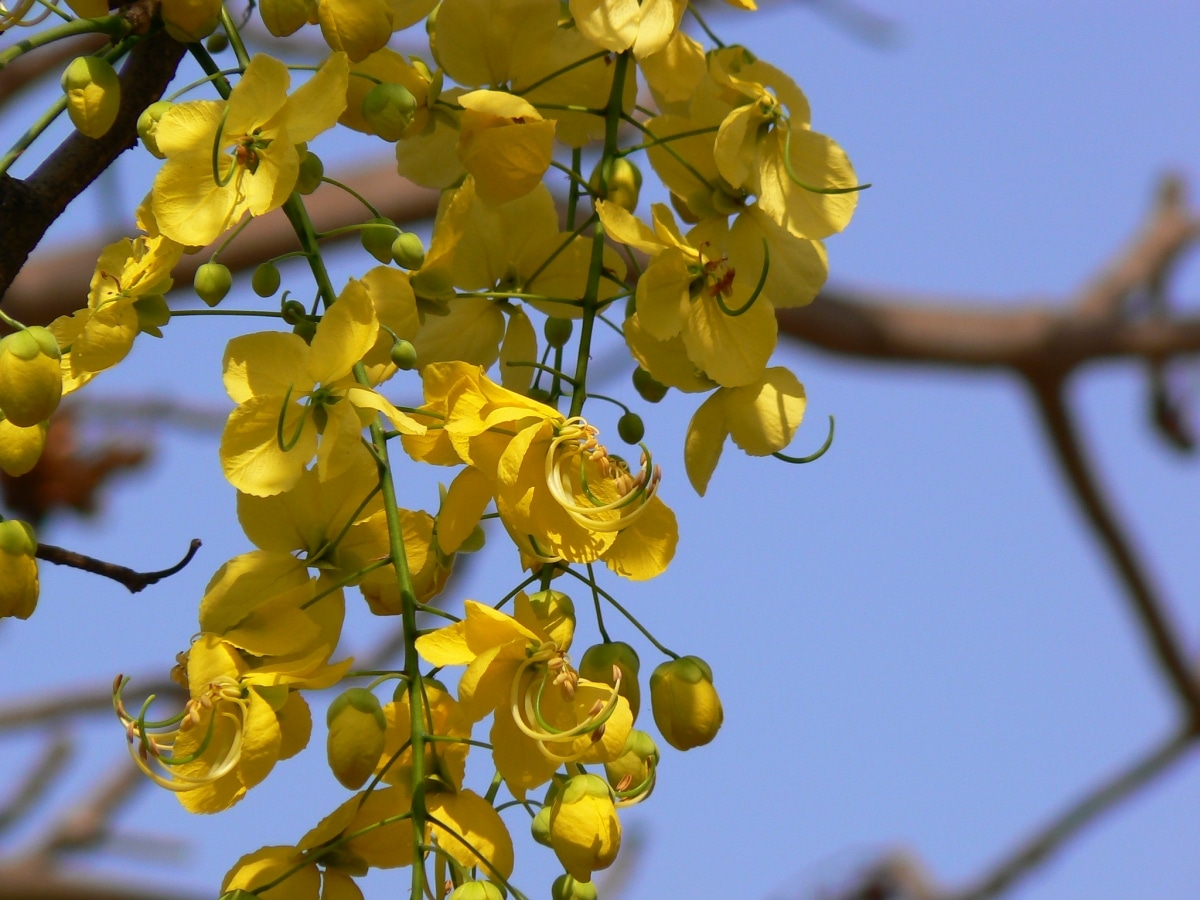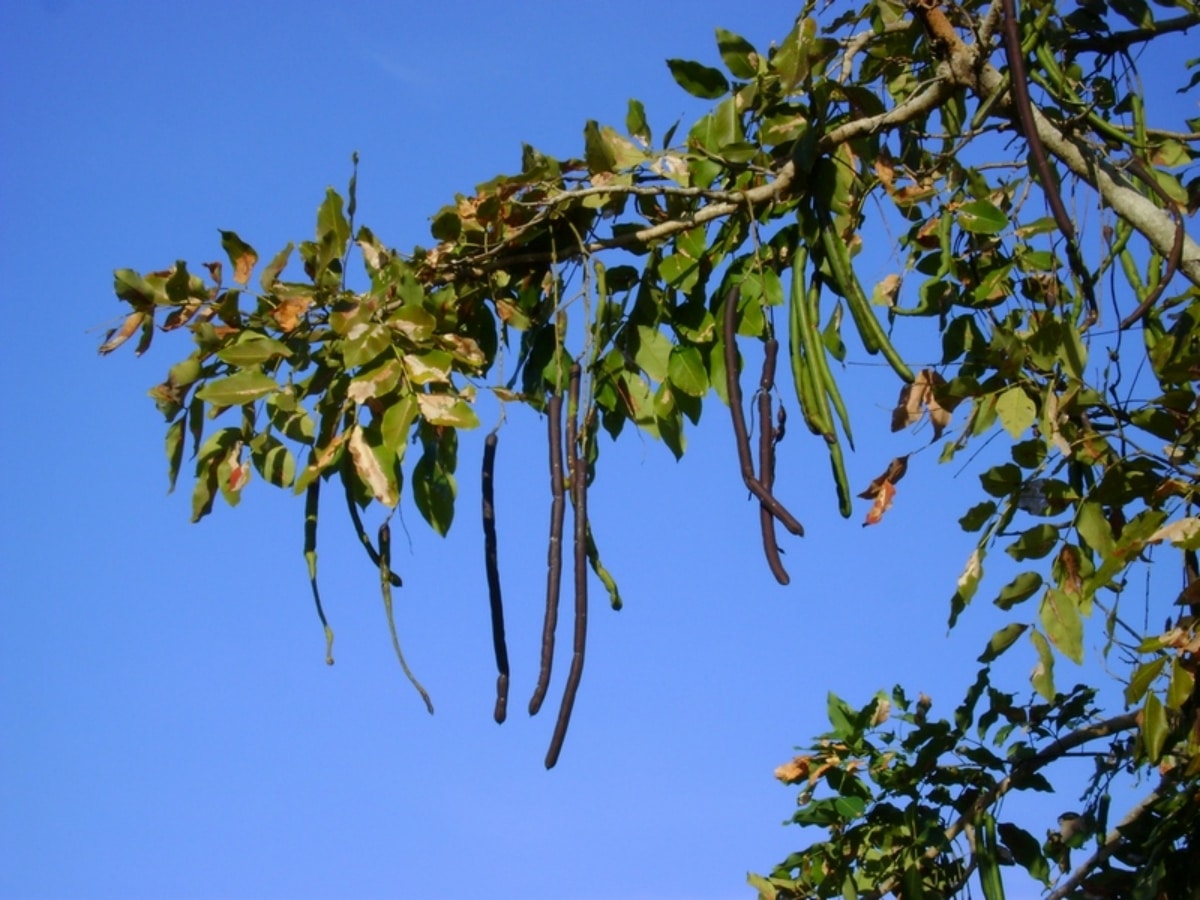
La Cassia fistula it is a very beautiful tree, especially when it is in flower. Its flower clusters hang from the branches in spring, bringing color to the place where it is, and attracting various pollinating insects, including bees. It is also a plant that tolerates pruning quite well, which is why it can be grown in small gardens, and even in a pot if we are willing to trim its branches every few years in order to give it a bushy shape.
Although, to be honest, if we want it to look really beautiful, it is best to let it grow on its own, and only remove the branches that, with the passage of time, dry up and die. But, what is the origin of Cassia fistula And what do you need to be able to live well?
Origin and characteristics of Cassia fistula

Image – Wikimedia/B00J4JNH9O
Our protagonist it is a deciduous tree native to the Middle East, Egypt, and tropical and subtropical regions of Asia. For the Thais it is their national tree. However, outside its places of origin it can be found in the gardens of tropical America, specifically in those regions where it rains frequently. It is also grown (or can be grown) in other places where frosts are not recorded, such as the Costa Tropical in southern Spain. In other areas, such as the Mediterranean, it needs protection during the winter.
It is a plant that grows between 6 and 20 meters in height. This will be determined above all by the climate, since the more favorable it is for it, the more and better it can grow; however, it will also be necessary for the soil to provide the nutrients it needs, and also allow its roots to develop normally.
The leaves are alternate, green and petiolate. And as for the flowers, which are yellow, they are grouped in hanging clusters between 30 and 80 centimeters long.. This feature makes some know the Cassia fistula as golden rain, although you have to be careful with this because there is a tree that also receives that name: the Laburnum anagyroides, which only lives in temperate climates. Other names that C. fistula receives are the following: purgative cassia, leavesen, fistula cane, Indian laburnum and golden rain.
And the fruit is a dark brown legume that can be very long, up to 60 centimeters, inside which we will find numerous oval and brown seeds.
What uses is it given?
- Ornamental: when it is in flower it is a true wonder, so it is used to plant in areas where it can stand out. Also, it provides shade.
- Bonsai: it has characteristics that make it a very attractive species for bonsai enthusiasts and experts: it resists pruning well, grows at a good pace, flowers without problems even when planted in a tray... It is not demanding, although it should not be keep outside if frost occurs.
- Medicinal: leaves, flowers and vegetables are used:
- Leaves: as a poultice to relieve itching and/or pain from wasp stings.
- Flowers: a syrup is made to treat constipation.
- Legumes: specifically, the pulp is consumed as an infusion to relieve the symptoms of mild respiratory illnesses, such as colds, flu and the like.
What are the needs of the Cassia fistula?

Image – Flickr/B00J4JNH9O
To finish, we are going to talk about what this plant needs to grow properly; Thus, if you want one in your garden or on the terrace, you will know how to take care of it:
Location
It is important that it is placed in a sunny place; so you can have a normal development. When it lacks light, its branches, that is, they grow very quickly towards the most powerful light source (which can be the reflection of light on metal for example), and in doing so they "thin" and become weak.
As they lose strength, they end up falling. This happens a lot to seedlings that are kept indoors; That is why it is better to put the cassia as soon as possible in an area where it gets direct sunlight.
If you want to know what its roots are like, you do not have to worry about this issue since they are not invasive. But if you are going to plant it in the ground, we recommend placing it about 5 meters from the wall at least so that it can grow straight.
Soil or substrate
- If you are going to be in the garden, must be planted in a light soil, rich in nutrients and with good drainage.
- if you're going to be in flower pot, it is necessary to fill with a universal cultivation substrate that is also light and of quality, such as this.
Irrigation
Since it does not resist drought, it should be watered more or less every 2 or 3 days in summer, and every 5-6 days the rest of the year. But if, for example, you live in an area where it rains frequently, you will have to water less since the soil takes longer to dry.
Subscriber
It is advisable to pay the Cassia fistula en spring and summer, especially if you live in an area where winters are cold, since it is important that it arrives as strong as possible at that season so that it can survive it. It can be fertilized with organic fertilizers, or with fertilizers such as universal (for sale here) or for green plants (you can buy it here) following the instructions for use.
Multiplication

Image - Flickr / Tatters ✾
It multiplies easily from seeds in spring-summer.. These are put in a strainer and this in a glass with boiling water for 1 second and then in another glass with water at room temperature for 24 hours. The next day they are sown, for example, in peat tablets or in seed trays with specific soil (such as this), placed in a sunny place. For everything to go well, you have to treat them from time to time with a fungicide such as No products found., since the fungi cause very serious damage to young plants.
Pruning
If necessary, it is pruned in late winter. You have to remove the dry branches, and trim those that grow too much.
Rusticity
It does not resist the cold. An adult and acclimatized specimen could withstand some very weak and punctual frosts of up to -1ºC, but only if the temperature then rises quickly above 10ºC.
What did you think of Cassia fistula? Have you heard of her?